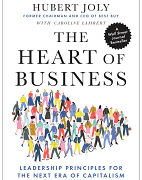Describing Simply in Content Marketing

“If you understand something but can describe it only in complex or jargony language, you’ll reach just the subset of people with expertise in the topic,” Frances X. Frei and Anne Morriss write in Harvard Business Review. Instead, they advise corporate leaders, “When your organization needs to make a big change, stories will help you convey why it needs to transform but also what the future will look like in specific, vivid terms.”
The authors go on to detail four steps involved in moving the constituents to take positive action. Each of these, I find, is applicable to content marketing through blogs.
1. Acknowledge the good parts of your history.
As I teach at Say It For You, history has an important place in blogs. “History-of-our-company” background stories have a humanizing effect, engaging readers and creating feelings admiration for business owners or practitioners.
2. Reckon with the not-so-good parts of your history.
Publishing content about past failures can actually prove to be a success, with the stories eliciting feelings of empathy and admiration by readers for entrepreneurs who recognize their own missteps.
3. Provide a clear and compelling mandate going forward.
At Say It For You, we know that, when searchers arrive at your blog, they already have an interest in (and probably some core knowledge about) your subject. Blog marketing reality is that, in order to move searchers to the next step, you need to “prove your case” with statistics showing you know a lot about the problem you’re proposing to solve, and that your and your staff have the experience, training, and degrees needed to solve that problem.
4. Get into the “weeds” of your plan with specific recommendations.
Smart buyers want clear, specific recommendations that tie back to solving those problems.. Since, other than the clues offered through the words searchers have chosen to type into the search bar, their individual needs are as yet unknown to you, include anecdotes as examples of common issues that have been solved using your products and expertise.
Blog marketing is all about describing – the past, the problem, the solutions – simply!





Follow us online!